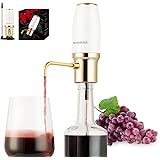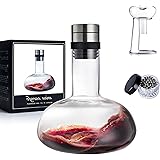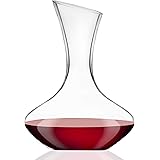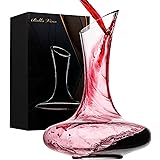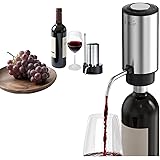Have you ever found yourself at a dinner party, perhaps with a glass of a delightful new wine in hand, and wondered if you were truly appreciating it? It can feel a bit intimidating when the conversation turns to “notes of blackberry” or “a hint of oak,” especially if you are unsure where to begin. Fortunately, enhancing your appreciation for wine does not require years of study or a seasoned sommelier’s palate; it simply starts with a few foundational practices.
As Gary from Gary’s Wine and Marketplace briefly demonstrates in the video above, one of the fundamental actions in learning how to taste wine effectively is the swirl. This simple motion is more than just a stylistic flourish; it is a crucial step in preparing the wine for a more complete sensory evaluation. Let’s delve deeper into this and other essential tips that can transform your wine-tasting journey.
Mastering the Art of Wine Tasting: Essential Tips for Beginners
The First Step: Understanding the Swirl (and Why It Matters)
The act of swirling wine, as highlighted by Gary, is often one of the first things a novice notices about experienced tasters. It is not just about looking sophisticated; rather, it serves a very practical purpose. When the wine is swirled gently in the glass, a larger surface area of the liquid is exposed to the air. This process, known as aeration, is vital for releasing the volatile aromatic compounds that are responsible for the wine’s complex scents.
Imagine if a beautiful melody were muffled behind a heavy curtain. The curtain would need to be drawn back for the music to truly fill the room. In a similar vein, the swirling motion helps to “open up” the wine, allowing its true essence to become more apparent. Oxygen is introduced into the wine, prompting a gentle oxidation that can soften tannins in red wines and make the fruit aromas in both red and white wines more pronounced. Without this simple step, many of the wine’s nuanced characteristics might remain locked away, diminishing the tasting experience.
Beyond the Swirl: The Full Sensory Journey of How to Taste Wine
Once the wine has been properly swirled and its initial aromas are encouraged to emerge, the true art of wine tasting unfolds through a systematic engagement of your senses. While Gary’s tip focuses on the kinetic aspect, a comprehensive approach to how to taste wine involves a three-pronged strategy: sight, smell, and taste. Each stage offers distinct clues about the wine’s origin, age, and characteristics.
1. The Visual Assessment: What Does Your Wine Tell You?
Before ever bringing the glass to your nose, much can be learned by simply observing the wine’s appearance. Firstly, the glass should be held against a white background, such as a napkin or a tablecloth, to accurately gauge its color. The hue of the wine can provide significant insights into its age, varietal, and even its winemaking process. For instance, a youthful red wine typically presents with vibrant ruby or purple tones, while an older red might display brick-orange or garnet edges, indicating maturation.
Secondly, the clarity of the wine is assessed. A brilliant, clear wine is generally preferred, although some unfiltered wines may exhibit a slight haziness that is entirely natural. Lastly, the wine’s “legs” or “tears” can be observed after swirling. These are the streaks that run down the inside of the glass. While often associated with quality, legs are primarily an indicator of the wine’s alcohol content and viscosity, not necessarily its flavor profile.
2. The Olfactory Exploration: Unlocking the Aromas
After the visual assessment, the sense of smell becomes paramount. A significant portion of what is perceived as “taste” is actually derived from aroma. The nose is crucial in detecting the intricate array of scents that comprise a wine’s bouquet. With the wine swirled, bring the glass gently to your nose and take a few short, deliberate sniffs, rather than one deep inhale. This approach allows the olfactory receptors to detect various aromatic layers more effectively.
Imagine identifying notes of green apple and citrus in a white wine, or perhaps black cherry and a hint of vanilla in a red. These “aroma compounds” are categorized into primary, secondary, and tertiary scents. Primary aromas are fruit, floral, and herbal notes derived directly from the grape varietal. Secondary aromas are developed during the fermentation process, often imparting hints of yeast, bread, or dairy. Tertiary aromas, or “bouquet,” emerge with aging in a bottle or barrel, introducing complex notes like tobacco, leather, or nutty undertones. Practice is key to distinguishing these nuances, building a personal library of scents.
3. The Palate’s Pleasure: Deciphering the Taste Profile
Finally, the moment arrives to engage the palate. Taking a small to medium-sized sip, the wine is allowed to coat the entire mouth. This ensures that all taste receptors—those for sweetness, acidity, bitterness, and saltiness—are activated. As the wine lingers, its various components are evaluated.
Firstly, the sweetness is noted, ranging from dry to lusciously sweet. Secondly, the acidity is assessed; this provides freshness and makes the wine feel lively on the tongue. Imagine the refreshing zing of a high-acid Sauvignon Blanc. Thirdly, tannins, primarily found in red wines, contribute to the wine’s structure and mouthfeel, creating a drying sensation. Fourthly, the “body” of the wine is determined, indicating its weight or fullness on the palate—is it light-bodied like skim milk, or full-bodied like whole milk? Lastly, the finish, or the lingering impression of the wine after it is swallowed, is noted. A long, pleasant finish is often a sign of a well-made wine, leaving you with delightful residual flavors and sensations.
Practical Tips for Enhancing Your Wine Tasting Experience
To further refine your ability to taste wine, several practical considerations can significantly elevate your experience. One crucial aspect is serving temperature; proper temperature is paramount as it directly impacts how aromas and flavors are perceived. White wines are typically enjoyed chilled, while red wines are often served at a cool room temperature, allowing their complex profiles to fully express themselves. Too cold, and flavors are muted; too warm, and alcohol can become overly prominent.
Next, the right glassware is selected; specific wine glasses are designed to concentrate aromas and direct the wine to the optimal parts of the palate. Furthermore, keeping notes on the wines you taste can be incredibly beneficial. Documenting your observations about color, aroma, and flavor helps to build your sensory memory and track your preferences over time. Ultimately, regular practice and a willingness to explore different varietals and regions are what truly refine one’s ability to appreciate and understand how to taste wine, making each glass a journey of discovery.


